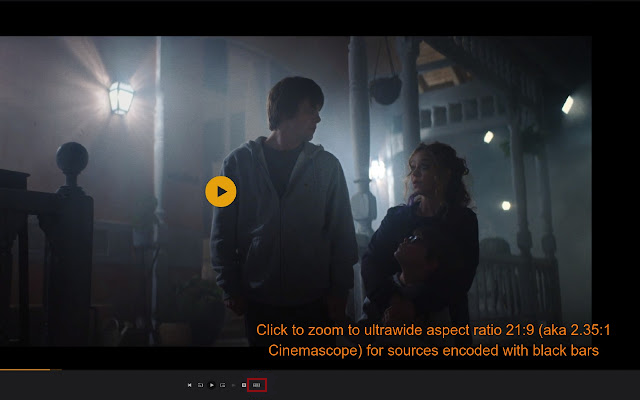Click O Tron
- Created by David Benioff, D.B. With Emilia Clarke, Peter Dinklage, Kit Harington, Lena Headey. Nine noble families fight for control over the lands of Westeros, while an ancient enemy returns after being dormant for millennia.
- To this end, I created Click-o-Tron, possibly the first website in the world where all articles are written in their entirety by a Recurrent Neural Network. New articles are published every 20 minutes.
Always increasing choices for modular analog synthesizers in all formats. SynthCube making modular analog synthesizers more accessible. We have a wide selection of synthesizer DIY, modular synths, eurorack, full euro kits, components and PCBs.
| This page is an orphan, as no other articles link to it. |
- Refuling in Space
- 3Fly Up A Fuel Tanker
- 4Use ISRU
Specifications
- Length: 1-3 hours
- Difficulty: Advanced
- For Version: 1.0.X
Approaches
You have 2 approaches: fly up a fuel tanker or use ISRU.
Fly Up A Fuel Tanker
Step 1 - Design your fuel tanker
I recommend this design:
- Tanker
- 1x Clamp-O-Tron Docking Port
- 1x Rockomax Brand Adapter 02 (upside down)
- 1x RC-L01 Remote Guidance Unit
- 1x FL-R1 RCS Fuel Tank
- 1x Rockomax Jumbo-64 Fuel Tank
- 4x RV-105 RCS Thruster Block (in 4x symmetry, at the top of the FL-R1 RCS Fuel Tank)
- 4x RV-105 RCS Thruster Block (in 4x symmetry, at the bottom of the Rockomax Jumbo-64 Fuel Tank)
- 2x Gigantor XL Solar Array (in 2x symmetry, in the middle of the Rockomax Jumbo-64 Fuel Tank)
- 1x MechJeb unit (AR202 case) (emergency only!)
- Transfer Stage
- 1x Rockomax Brand Decoupler
- 1x Advanced Reaction Wheel Module, Large
- 1x Rockomax X200-32 Fuel Tank
- 2x FL-T200 Fuel Tank (2x symmetry, attached radially around the bottom of the Rockomax X200-32 Fuel Tank)
- 2x FTX-2 External Fuel Duct (2x symmetry, feeding fuel from the Rockomax X200-32 Fuel Tank to the FL-T200 Fuel Tanks)
- Some EAS-4 Strut Connectors (to strut stuff up)
- 4x RV-105 RCS Thruster Block (in 4x symmetry, at the top of the Advanced Reaction Wheel Module, Large)
- 4x Stratus-V Cylindrified Monopropellant Tank (in 4x symmetry, in the middle of the Rockomax X200-32 Fuel Tank)
- 4x RV-105 RCS Thruster Block (in 4x symmetry, at the bottom of the Rockomax X200-32 Fuel Tank)
- 2x RV-105 RCS Thruster Block (in 2x symmetry, in the middle of the FL-T200 Fuel Tanks)
- 2x LV-N 'Nerv' Atomic Rocket Motor (in 2x symmetry, at the bottom of the [FL-T200 Fuel Tank]]s)
- Launch Vehicle
- 1x Rockomax Brand Decoupler
- 1x Rockomax X200-16 Fuel Tank
- 4x RV-105 RCS Thruster Block (in 4x symmetry, at the top of the Rockomax X200-16 Fuel Tank)
- 4x Stratus-V Cylindrified Monopropellant Tank (in 4x symmetry, in the middle of the Rockomax X200-16 Fuel Tank
- 4x RV-105 RCS Thruster Block (in 4x symmetry, at the bottom of the Rockomax X200-16 Fuel Tank)
- 1x Rockomax 'Skipper' Liquid Engine
- 1x Rockomax Brand Decoupler
- 1x AE-FF2 Airstream Protective Shell (2.5m) or Procedural Fairings fairing or KW Rocketry fairing
- Launch Vehicle of your own design (that can get into orbit)
Step 2 - Launch your fuel tanker
Use a normal ascent profile to get into a circular orbit with a periapsis greater than 75 km and deploy your Gigantor XL Solar Arrays. Now you should be on the upper stage (the one right before the transfer stage). Fire your engines to get a transfer to whatever planet/moon your target is orbiting.
Step 3 - Rendezvous and Docking
Using the transfer stage, rendezvous with the target spacecraft. Once you are within 250 meters, cancel your relative velocity and jettison the transfer stage.From there, dock with your target.
Step 4 - Transfer Fuel
Right-click on the Rockomax Jumbo-64 Fuel Tank of your fuel tanker. If you've followed the tutorial, it should be full. Then, hold Alt (Option on a Mac) and right-click on the fuel tank of your target spacecraft that you want to refuel. The right-click menu should have a section labeled 'Transfer.' Under that section, press the buttons labeled 'In' on both the Liquid Fuel and Oxidizer subsections. After it's refueled, close the right-click menu and undock the fuel tanker.
Use ISRU
Step 1: Put on these parts
- Attach these parts to your spacecraft:
- Small Holding Tank or Large Holding Tank
Step 2: Land Somewhere
Land your spacecraft somewhere, I don't care where.
Step 3: Start Mining/Converting
Right-click on your 'Drill-O-Matic' Mining Excavator(s) and click 'Deploy.' Once it's deployed, click 'Start Surface Harvester.' Right-click on the Convert-O-Tron_250(s) and click 'Start LF/O' and 'Start Monoprop.' You should start generating fuel!
Final Word
Now that you have refueled in space, go build the Tylo base of your dreams or do something else. Have fun, and may Jeb's awesomeness be with you. 😉

Send in the clones!
First things first!
Proto-Pic supplied this board for my review...back in May 2018. It fell behind my desk and a team of archaeologists found the board last weekend. As the board was provided free of charge I need to be clear, Proto-Pic did not ask to see or influence the review in any way. No money changed hands either. They just offered me the kit for review. Sorry its a bit late!
So what is it?
PROGRAM-O-TRON is a tool to program certain ATMega chips without the need for a computer.
Sorry what?
Ok the PROGRAM-O-TRON can...
- Copy a chip inserted into the holder, and then paste the contents to another compatible chip. Just by using the copy and paste buttons!
- Write a hex or Fuse file from SD card to the chip. You can have up to six files on a card, each file numbered to correspond to the button. For example button 1 has a file on the SD card of
1.hex, button 2 has a Fuse file2.fus. - Using the ICSP header we can program a chip already soldered into a project, just connect the ICSP pins of PROGRAM-O-TRON to the ICSP header of your board (Arduino have these)
The PROGRAM-O-TRON has a really simple layout, which lends itself to the task at hand.
So what chips does it work with?
Via the ZIF socket
- ATtiny25
- ATtiny45
- ATtiny85
- ATtiny13A
- ATmega168PA
- ATmega168V
- ATmega328P
- ATmega328PB
- ATmega328
- ATmega48PA
- ATmega88PA
Via the ICSP connector
- ATtiny24
- ATtiny44
- ATtiny84
- ATtiny25
- ATtiny45
- ATtiny85
- ATmega48PA
- ATmega168PA
- ATmega168V
- ATmega328P
- ATmega328PB
- ATmega328
- ATmega164P
- ATmega324P
- ATmega644P
- ATmega640
- ATmega1280
- ATmega1281
- ATmega2560
- ATmega2561
- At90USB82
- At90USB162
- ATmega8U2
- ATmega16U2
- ATmega32U2
- ATmega16U4
- ATmega32U4
- ATmega1284P
- ATmega1284
- ATtiny2313A
- ATtiny4313
- ATtiny13A
- ATmega8A
- ATmega64rfr2
- ATmega128rfr2
- ATmega256rfr2
Hi reader!
So how do I use PROGRAM-O-TRON?
Example 1: Copying an ATMEGA328PU chip
- Insert the ATMEGA328PU into the socket with pin 1 at the top left, nearest the lever.
- Close the lever.
- Power up the PROGRAM-O-TRON and wait until the LEDs settle.
- Press COPY to dump the contents to the PROGRAM-O-TRON.
- When done, remove the ATMEGA328PU, and place the ATMEGA328PU which you wish to flash to!
- Close the lever.
- Press Paste
- Wait for the LEDs to settle.
- Remove the freshly flashed ATMEGA328PU and put it into your project!
Example 2: Flashing a hex file.
- Create an Intel hex file (don't worry I'll be doing this later!) and rename the file to
1.hex. - Save
1.hexto an SD card formatted as FAT32 (standard Windows format) - Insert the SD card into PROGRAM-O-TRON.
- Insert the target chip, for example an ATMEGA328PU.
- Power up PROGRAM-O-TRON.
- Press button 1 to flash
1.hexto the ATMEGA328PU. - Wait for the LEDs to settle.
- Remove the ATMEGA328PU and insert into your project.
How can I flash an Arduino sketch to many ATMEGA328PU?
Here is a use case.
I have written a cool Arduino sketch that I want to copy to lots of ATMEGA328PU chips which will be in a breadboard. I could plug in each ATMEGA328PU into an Arduino Uno and flash each one. Or I could compile the sketch in the Arduino IDE. Copy the hex file to the SD card and use PROGRAM-O-TRON to mass flash the chips.
Click On Travel
So how can I do that?
First we need to find out where the Arduino IDE saves a hex file to when compiling a sketch.
Open the Arduino IDE, and click on File >> Preferences.
In the new window look for Show verbose output during
and click on compilation.
Now open the Blink example sketch. Then go to Tools >> Board and ensure that Genuino / Arduino Uno is selected.
Click on the Verify icon to compile and check the code. After a few seconds the console output at the bottom of the Arduino IDE will show a lot of text. We can poke around in here and learn where the hex file is. In my case it is saved in /tmp/arduino_build_271256/ as a temporary file.
Sure enough inside that directory are a number of hex files.
In particular I want the file Blink.ino.with_bootloader.hex which I copy to my SD card and rename to 1.hex.
I then put the SD card into PROGRAM-O-TRON, and insert the ATMEGA328PU. I power up the PROGRAM-O-TRON and press Button 1 to flash the hex file to the chip.
I then pop the chip into my Arduino to test, and after a few moments I see a blinking LED.
So who is this aimed at?
PROGRAM-O-TRON is aimed squarely at people who need to bulk flash chips. So the makers who are selling kits online.

So where can I get one, and how much.
Click O Trong
PROGRAM-O-TRON is available from Proto-Pic and it retails for £53.00 inc VAT. Yes this is a big price for such a board, but if you are bulk flashing boards then this piece of kit will save you a lot of time.